Devoid of human presence, the ruins of dwellings stand frozen in time.
They offer a fascinating look into the lives of those who used to call this island home.
Atop a hill, among the terraced fields, carved into volcanic land,
Stands a church — a symbol of faith.
Hope and determination inherent in the building still linger,
Even with parishioners long gone.
Set deep in an ancient forest, majestic rock formation — a sacred place of worship,
Has long evoked strong feelings of awe and wonder.
An island with a story — close your eyes, and in the stillness,
Hear the coastal wind whisper it to you.
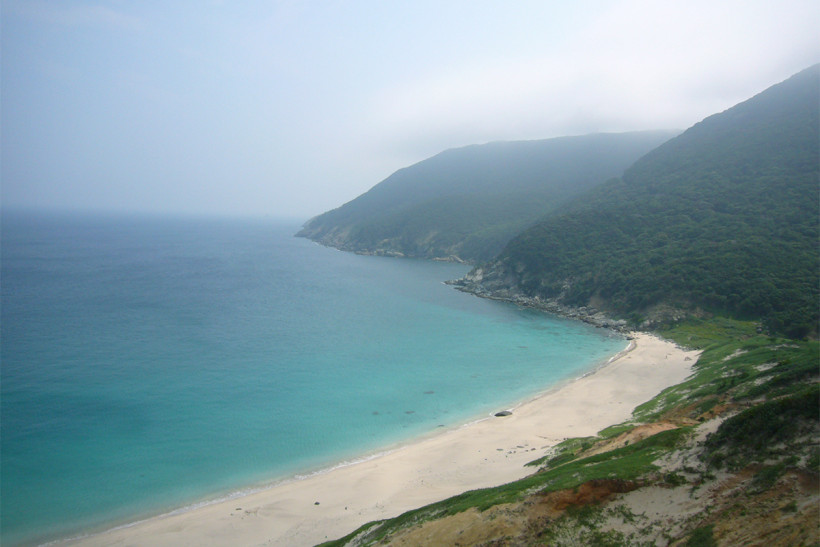
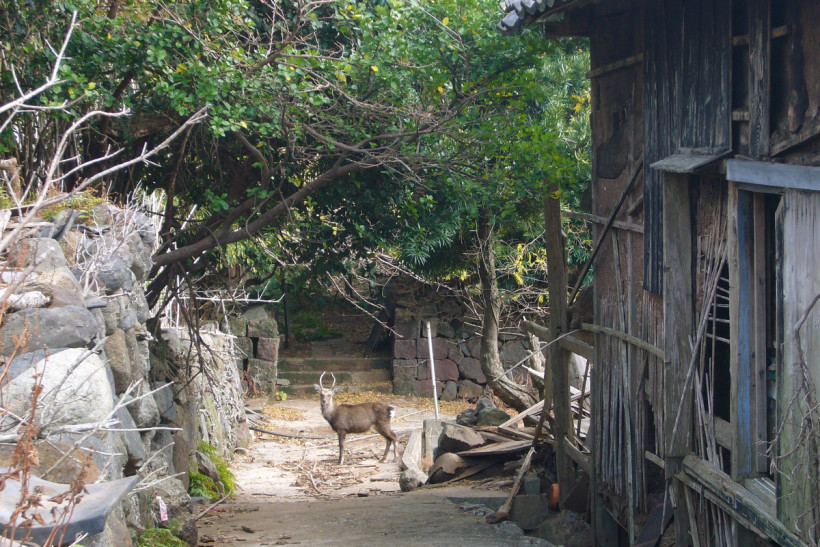
Nozaki Island is the treasure trove of unique flora and fauna, including the primary forest around Okino Kojima Shrine on the north side and Japanese wood pigeons, one of Japan’s protected species. All around the island, you can see some 400 Japanese wild deer roaming in the wild.
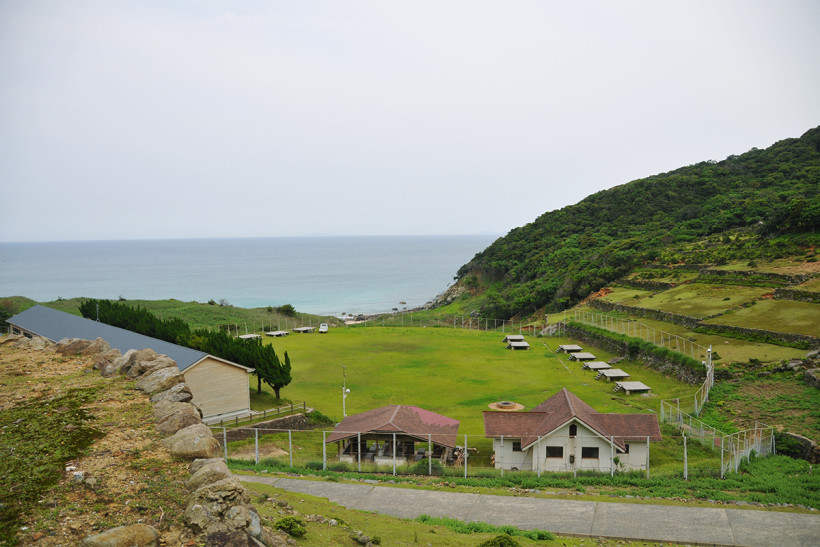
In 2007, “Remains of the Nokubi and Funamori Villages” (as well as the pathway between them) was added to the Tentative List of the UNESCO World Heritage Sites as a component of “Churches and Christian Sites in Nagasaki”. In October 2016, the titles were renamed to “Remains of Villages on Nozaki Island” and “Hidden Christian Sites in the Nagasaki Region”, respectively. In July 2018, the property was officially inscribed on the World Heritage List as “Remains of Villages on Nozaki Island”ー one of the 12 components that make up “Hidden Christian Sites in the Nagasaki Region”. Nozaki island is also a part of “Important Cultural Landscapes of the Ojika Island”, designated in 2011 by the Japanese Government.
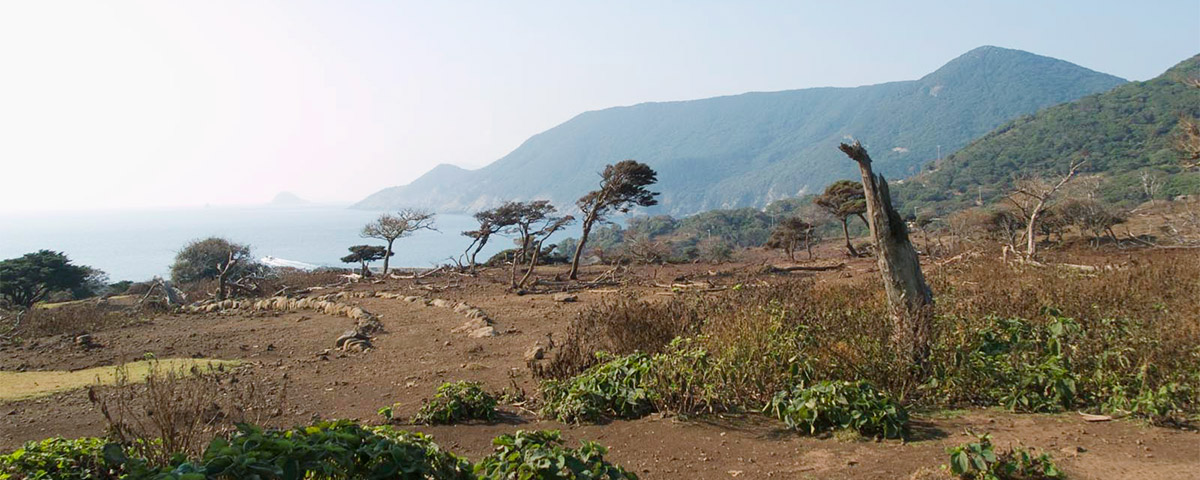
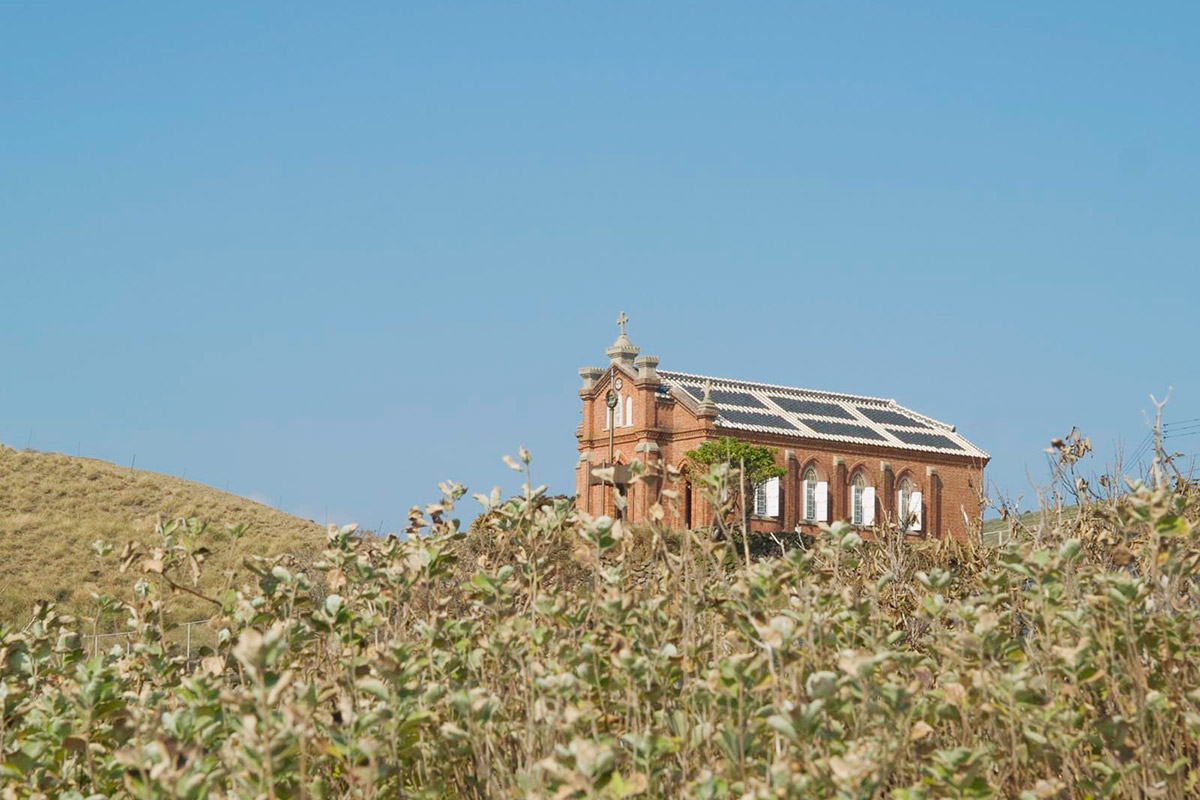
Two different religions coexisted in Nozaki: Shinto practiced in Nozaki village and Christianity in Nokubi and Funamori. Okino-Kojima shrine sits atop the north mountain with Oe-Ishi, the 24 meter-high torii-like rocks, behind it. It has hosted parishioners from Nozaki, from the mainland Ojika, and all the rest of the Goto and Hirado islands. In the middle of the island, the former Nokubi church looks over the sea as it keeps telling stories of hidden christians and their abiding faith.
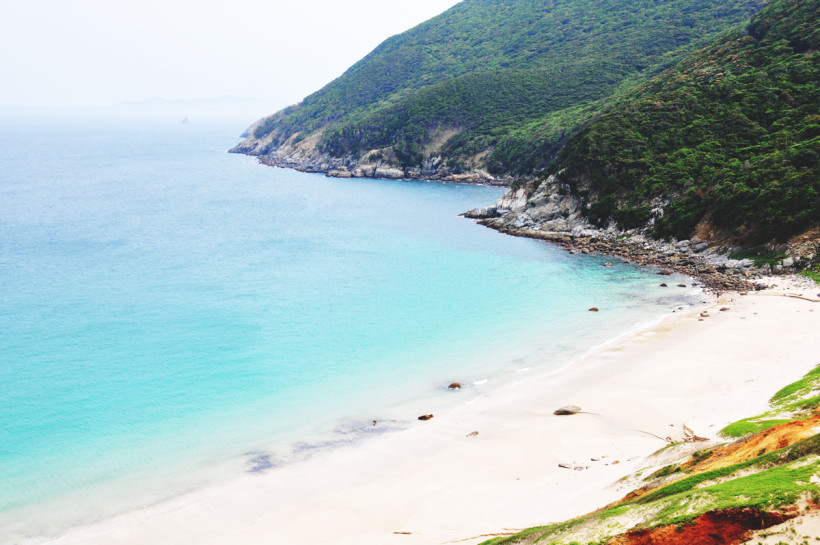
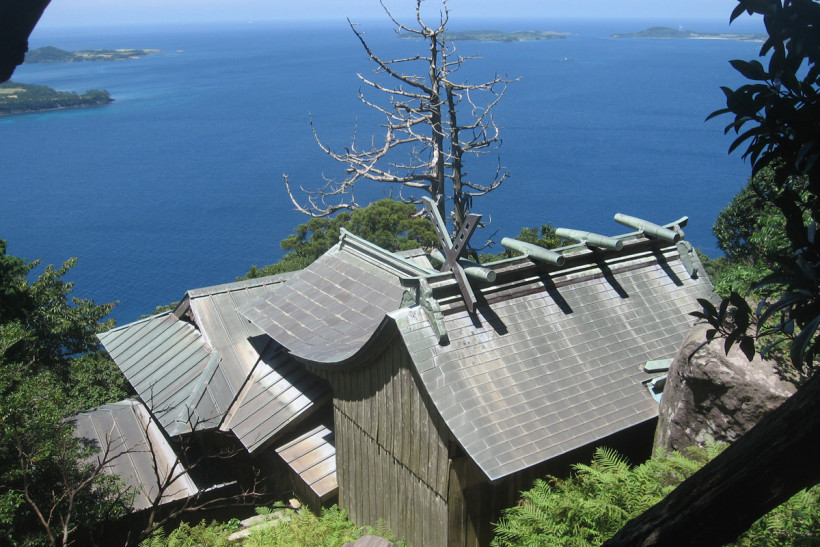
After a long hike in the deep forest dotted with megalithic mossy stones, you will come out to the ancient shrine and Oe-Ishi, the giant rock formation behind it. Okino-Kojima shrine (the Sea Kojima shrine) was built so it would face its twin shrine in Ojika Island, Chino-Kojima (the Land Kojima shrine), in 704 A.D. The priest, who was in charge of the shrine was the last person to leave Nozaki Island in 2001.
*The trail to Okino-Kojima Shrine can be tough with unstable rocks, dense vegetation, and few signboards. There are also possible encounters with wild boar. To avoid accidents, please do not attempt going to the shrine without a guide. Thank you for your cooperation.
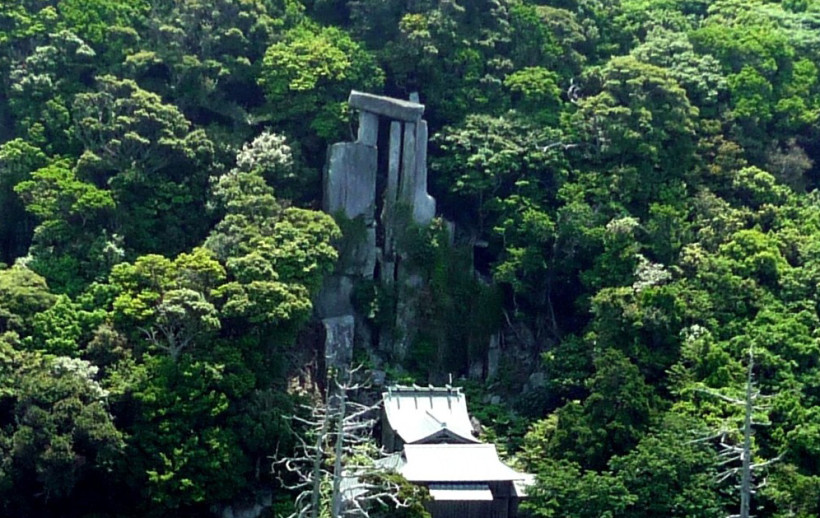
Behind Okino-Kojima Shrine stands the magnificent Oe-Ishi. The imposing rock formation is shaped like torii (traditional Shinto gate), measuring 24 meters high, 12 meters wide, and the top slab 5 x 3 meters. Whether these stones were placed by humans or naturally formed is unknown. Many local myths and legends revolve around Oe-Ishi, such as the one about Kojima deity appearing on top of Oe-Ishi. Also, some people say that the Shinto ceremonial dance used to be performed on top of Oe-Ishi in the ancient days.
*The trail to Oe-Ishi can be tough with unstable rocks, dense vegetation, and few signboards. There are also possible encounters with wild boar. To avoid accidents, please do not attempt going to the shrine without a guide. Thank you for your cooperation.
Explore Nozaki with a guide.
Learn More>>>

The former Nokubi church is currently undergoing major repair works that are scheduled to be completed in June 2025. During the renovations, the church building is covered by scaffolding, and is off-limit to visitors. hank you for your understanding and cooperation.
